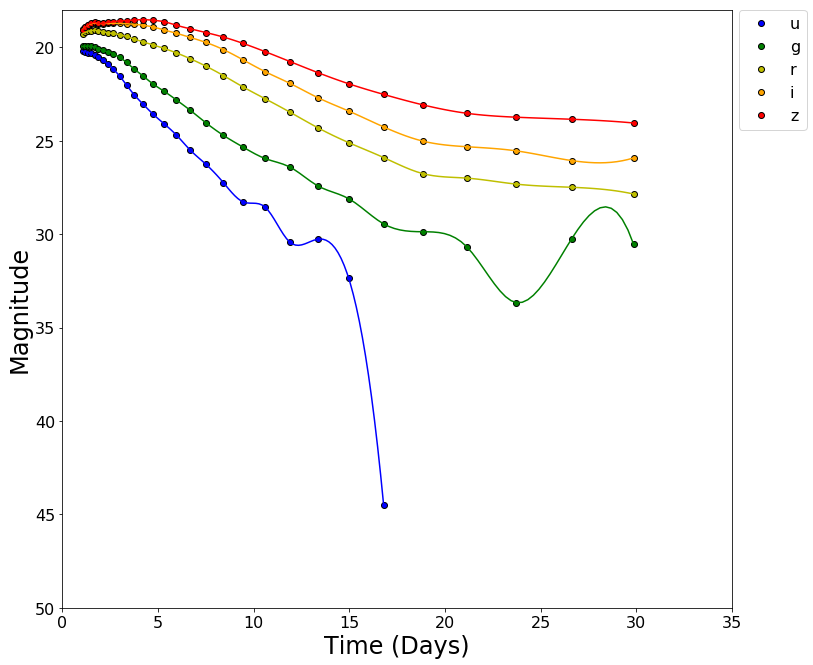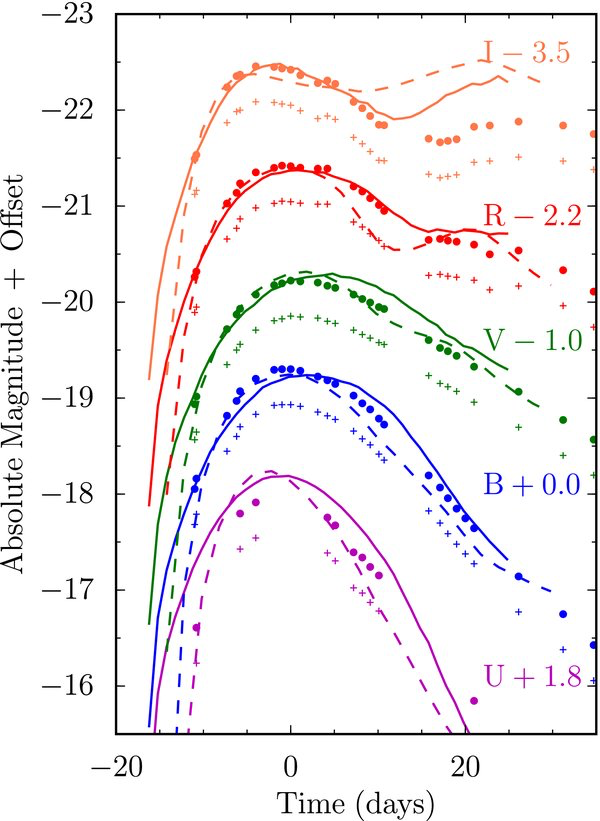A kilonova is a source of light that emerges from the compact binary mergers. The most common mergers that produce kilonova are neutron-star-neutron-star (NS-NS) mergers and neutron-star-black-hole (NS-BH) mergers. As these objects collide, they release material called ejecta from the collision site. This material is rich with neutrons, so the neutrons have a high probability to attach to atomic nuclei. This process is known as the rich-neutron-capture process or the r-process. The r-process is responsible for producing elements in the periodic table heavier than iron. These heavier element then decay, releasing electromagnetic radiation, which is the light of a kilonova.
Kilonovae are similar to type Ia supernovae for they are both transient sources. Their light curves only occur for a certain time period before they are too faint to detect. In addition, their light both vary from ultraviolet (UV) to near-infrared (NIR). While they may have similarities, one main difference between type Ia supernovae and kilonovae is the time at which the light curves fade. For type Ia's, the light can last for months before it's too faint whereas kilonovae light only lasts about a week, making it difficult to discover them with today's telescopes.
Kilonova Light Curves
| NS-NS Merger | NS-BH Merger | Type Ia Supernova |
|---|---|---|
 |
 |
 |
GW170817: The First Kilonova
On August 17, 2017, the astrophysical community detected gravitational waves and electromagnetic radiation from the binary neutron star merger GW170817. Observations from the Laser Interferometer Gravitational-Wave Observatory (LIGO) and multiple ground and space-based observatories detected the collapse of the two neutron stars, warping space-time and ejecting matter hot enough to shine in the entire light spectrum, including the first kilonova. In addition, many astrophysicists concluded that the kilonova consisted of at least two components: a “blue” component containing light r-process nuclei (A≲140) that dominates at early times and a “red” component containing heavy r-process material (A≳140) that the kilonova transitions to later in its life. Villar et al. 2017 demonstrates that a third “purple” component consisting of light and heavy r-process material is consistent with the observed light curves (see below).



